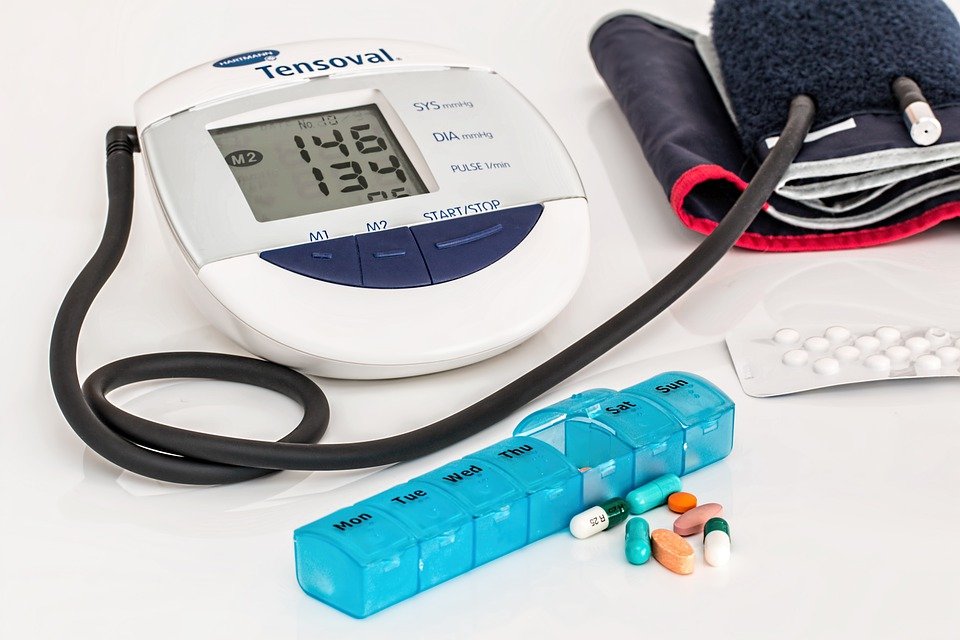
This breathing exercise is designed to help strengthen your diaphragm, an important muscle for enabling you to breathe. It is also sometimes referred to as belly breathing or abdominal breathing.
There are many benefits to diaphragmatic breathing that affect your whole body. This type of breathing is the basis for most meditation or relaxation techniques, which can lower your stress levels, reduce your blood pressure, and help regulate other critical bodily processes.
Diaphragmatic breathing instructions
The most basic type of diaphragmatic breathing is done by inhaling through your nose and exhaling through your mouth.
Diaphragm breathing basics
The following is a summary of how to do diaphragmatic breathing. It may be easiest to do when lying on the floor.
- Sit or lie down on a comfortable, flat surface.
- Relax your shoulders, shifting them down away from the ears.
- Put a hand on your chest and a hand on your stomach.
- Without straining or pushing, breathe in through your nose until you can’t take in any more air.
- Feel the air moving through your nostrils into your abdomen, expanding your stomach and the sides of the waist. Your chest remains relatively still.
- Purse your lips as if sipping through a straw. Exhale slowly through the lips for 4 seconds and feel the stomach gently contracting.
- Repeat these steps several times for the best results.
Rib-stretch breathing
The rib stretch is another helpful deep breathing exercise to help you expand your breath into your rib cage. Here’s how to do it:
- Stand or sit upright.
- Cross your arms over your chest and place your palms on either side of your rib cage.
- Without straining or pushing, breathe in through your nose until you can’t take in any more air.
- Feel your ribs expand into your hands as you do so.
- Hold your breath for 5 to 10 seconds.
- Breathe out slowly through your mouth. You can do this normally or with pursed lips.
Numbered breathing
Numbered breathing is a good exercise for gaining control over your breathing patterns. Here’s how you can do it:
- Sit or stand upright and close your eyes.
- Without straining or pushing, breathe in through your nose until you can’t take in any more air.
- Exhale until all air has been emptied from your lungs.
- Keeping your eyes closed, fully inhale again.
- Keep the air in your lungs for a few seconds, then let it all out.
- Count that as breath one.
- Inhale fully again.
- Hold for a few seconds, then let it all out.
- Count that as breath two.
- Repeat a full inhale, hold, and then exhale.
- Count that as breath three.
- Repeat these steps until you’ve reached 10.
- Feel free to count higher if you feel comfortable. For an additional mindfulness component, you can start over again from one, noticing if you accidentally count beyond 10.
Lower-back breathing
Breathing from your lower back or kidneys can help you learn to breathe more evenly, instead of just breathing in and out.
- Place your palms on your lower back with your thumbs touching the top of your hip bones. Your hands will be roughly parallel with your kidneys.
- Inhale slowly through the nose, focusing on “sending” the breath into the hands at the lower back.
- You can very slightly contract the belly to emphasize the movement in the lower back.
- You may feel an almost indetectable movement in the lower back, or you may feel no movement at all.
- Exhale slowly through the nose or mouth, allowing the belly and sides of the waist to naturally contract.
- Inhale again and focus on expanding the lower back into the hands.
- Exhale and release the breath completely.
- Repeat the process for ten cycles.
This exercise is about expanding your lungs within your body to help stimulate movement and sensation in your lower back. You cannot breathe into your back or belly, you can only breathe into your lungs.
Box breathing
The four steps of box breathing are as follows: 1. Inhale for four seconds 2. Hold the breath for four seconds 3. Exhale for four seconds 4. Hold the breath for four seconds This breathing technique is effective because it forces you to slow down your breathing. When you slow down your breathing, you are also slowing down your heart rate. Box breathing, also called square breathing, is a four-step process involving breathing or holding the breath for four seconds at each step. The resulting 4×4 effect forces you to slow down your breathing, which in turn slows your heart rate.
- Sit or stand upright.
- Slowly exhale through your mouth, getting all the oxygen out of your lungs.
- Inhale as you count slowly to four in your head, filling the lungs completely without strain.
- Hold your breath while counting slowly to four.
- Exhale and release the breath slowly to the count of four.
- Hold your breath out for the count of four.
- Repeat the cycle five to ten times.
4-7-8 breathing
The 4-7-8 breathing practice is based on an ancient yogic technique called pranayama. Dr. Andrew Weil developed this technique.
- Let your lips part slightly. Make a whooshing sound, exhaling completely through your mouth.
- Close your lips and inhale silently through your nose as you count to four in your head, filling the lungs completely without strain.
- Hold your breath for 7 seconds.
- Make another whooshing exhale from your mouth for 8 seconds.
- Repeat for five to 10 rounds.
Deep breathing benefits
Each of these types of breathing have reasons, but deep breathing is the most beneficial for health.
What Deep Breathing Can Help
- Anxiety
- Depression
- Managing stress
- Improving focus
- Better sleep
- Faster recovery from exercise or exertion
Here are more benefits this type of breathing can have:
- It helps you relax, lowering the harmful effects of the stress hormone cortisol on your body.
- It lowers your heart rate.
- It helps lower your blood pressure.
- It helps you cope with the symptoms of post-traumatic stress disorder (PTSD).
- It improves your core muscle stability.
- It improves your body’s ability to tolerate intense exercise.
- It lowers your chances of injuring or wearing out your muscles.
- It slows your rate of breathing so that it expends less energy.
Why deep breathing helps
You might be asking yourself why something as simple as breathing can be so powerful. Slow breathing activates the “rest and digest” system, which is also known as the parasympathetic nervous system. This system is responsible for processes like digestion and urination that help conserve energy.
Deep breathing activates the vagus nerve, which controls the parasympathetic nervous system. This in turn regulates mood, digestion, and heart rate. In addition, deep breathing sends more oxygen to the brain and other organs.
The following is a suggested deep breathing exercise. Before you begin, take a minute to check in with yourself and see how you feel. Afterward, compare how you felt before with how you feel afterward.
If you’re feeling lightheaded after deep breathing, it’s best to stop and wait for the feeling to pass. If you continue to feel lightheaded or have anxiety, call your doctor.
Tips and tricks
Here are some things to keep in mind as you work on deep breathing exercises:
Make time for deep breathing
It may sound silly to you to set an alarm or timer to breathe, but it can help you ensure that you are getting these great deep breathing benefits regularly. By setting an alarm or timer, you can make sure that you take the time out of your day to focus on your breathing and get the benefits that come with it.
When your alarm goes off in the morning instead of grabbing your phone, try doing a few rounds of these breathing exercises.
Do it prior to and during high-stress situations
The best thing about breathing for relaxation is that you can do it any time and anywhere without anyone knowing.
Before you enter a situation that is likely to stress you out, take a minute to breathe deeply and relax.
More tips to get started and to keep going
Creating a routine can be an excellent way to get in the habit of diaphragmatic breathing exercises. Try the following to get into a good groove:
- Do your exercises in the same place every day. Somewhere that’s peaceful and quiet.
- Don’t worry if you’re not doing it right or enough. This may just cause additional stress.
- Clear your mind of the things that are stressing you out. Focus instead on the sounds and rhythm of your breathing or the environment around you.
- Do breathing exercises at least once or twice daily. Try to do them at the same time each day to reinforce the habit.
- Do these exercises for about 10–20 minutes at a time.
What happens during diaphragmatic breathing?
The diaphragm separates your chest cavity from your abdominal cavity The diaphragm is a muscle that is shaped like a dome and is located near the bottom of your ribcage, right below your chest. The diaphragm separates your chest cavity from your abdominal cavity.
During inhalation, your diaphragm contracts, causing your lungs to expand and take in air.
The muscles that are located in between your ribs are called intercostal muscles. These muscles assist in raising your rib cage which then helps your diaphragm to allow enough air to enter your lungs.
The muscles surrounding your collarbone and neck area assist the primary breathing muscles by contracting when it becomes difficult to breathe. Combined, they determine how quickly and how much your ribs can expand, creating space for your lungs.
Some of these muscles include:
- scalenes
- pectoralis minor
- serratus anterior
- sternocleidomastoid
Autonomic nervous system and your breath
Also, breathing is part of your autonomic nervous system (ANS). This system is in charge of essential bodily processes that you don’t need to put any thought into, like:
- digestive processes
- how quickly you breathe
- metabolic processes that affect your weight
- overall body temperature
- blood pressure
The Autonomic Nervous System is responsible for two main types of bodily functions- the sympathetic and parasympathetic divisions.
The sympathetic nervous system controls the fight-or-flight response while the parasympathetic nervous system controls everyday functions.
You can control some of the processes of your autonomic nervous system by doing deep breathing exercises.
Taking deep breaths can help you voluntarily regulate your ANS, which can have many benefits, including:
- lowering your heart rate
- regulating blood pressure
- helping you relax
- decreasing the release of the stress hormone cortisol
Risks and research on diaphragmatic breathing
Diaphragmatic breathing isn’t always helpful on its own.
ANS-related conditions, such as irritable bowel syndrome, are often most effectively treated with a combination of deep breathing and cognitive behavioral therapy or hypnotherapy, according to research.
Although deep breathing exercises might be helpful for some people, they aren’t always helpful for people with generalized anxiety disorder or similar mental health conditions.
GAD can last for a long time, and the many worries or anxieties that come with it can feel difficult to control. If deep breathing exercises don’t seem to be helping, they may cause more stress.
CBT, or cognitive behavioral therapy, is often more helpful than other methods in assisting someone with anxiety or other mental health issues.
Who can help with diaphragmatic breathing
Different breathing exercises exist, though not all may be the best suited for you.
Talk with one or more of the following professionals for advice on breathing exercises:
- Your primary care physician. They likely know more about your overall health than anyone, so they may give good advice tailored to your needs.
- A respiratory specialist. If you have a respiratory condition like COPD, a specialist can give you specific treatments and advice on your breathing.
- A cardiac specialist. If you have a condition that affects your heart or bloodstream, a cardiac expert can guide you through the benefits of breathing for your heart.
- A mental health professional. If you’re thinking about breathing to help reduce stress, talk with a therapist or counselor who can help you gauge if breathing exercises will help.
- A physical therapist. Your muscles and posture can affect your breathing, and a physical therapist can help you learn how to best use your muscles and movement to assist you in breathing better.
- A licensed fitness professional. If you just want to use breathing for daily stressors, talk with a personal trainer or yoga teacher, or go to the gym and learn the best breathing exercises for your health and fitness.
Apps for deep breathing
If you don’t want to have to remember these techniques, there’s an app for that.
iBreathe
The app iBreathe helps you with your breathing. It has several pre-programmed exercises, the ability to customize your own, and the ability to send you reminders.
Breathe+ Simple Breath Trainer
This app is perfect for people who find it difficult to focus when deep breathing. The app Breathe + Simple Breath Trainer synchronizes with your breathing, so that you can see beautiful visualizations that match your breath.
Apple Watch Breathe
The app will check in with you to see if you want to take a one-minute breathing break and guide you on when to inhale and exhale.
The takeaway
If you are interested in using this exercise to improve your breathing if you have COPD, talk with your doctor or respiratory therapist.
If you have COPD or any other conditions related to your nervous system, diaphragmatic breathing may help ease your symptoms. However, you should check with a medical professional to see if it’s a good idea for you before trying it, as it may not be helpful or could even have negative effects.
When you are feeling rested, diaphragmatic breathing is most effective. Try different techniques to see which one works best for you in terms of relief and relaxation.













